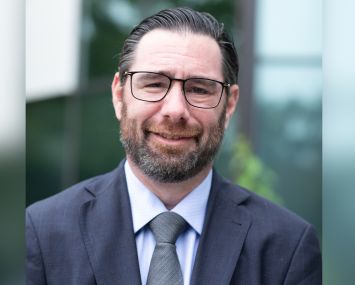Douglas Durst Looks Back on the Last Four Years as REBNY Chair
On the eve of handing over the REBNY chairmanship, Douglas Durst reflects on the last four years
By Mark Hallum January 16, 2024 1:00 pm
reprints
One of the great titans of New York real estate, Durst is currently wrapping up his second stint as chairman after a whirlwind ride. A global pandemic, a contested federal election, work-from-home throwing perhaps the biggest wrench in New York City’s office market in history, an immigration crisis and more.
But now it’s the curtain call for Durst’s tenure leading REBNY, and another New York City commercial real estate leader, Two Trees Management principal Jed Walentas, will step up in his place.
Durst sat down with Commercial Observer last week to discuss what was accomplished and what remains to be done, and how the soon-to-be-former REBNY chair perceives the market today.
This interview has been edited for length and clarity.
Commercial Observer: What’s your biggest piece of advice for Jed Walentas?
Douglas Durst: My biggest piece of advice for Jed is to continue to be Jed Walentas and not try to be anything else — he’s a great guy. He doesn’t really need my advice. … Now there’s no question that getting a new 421a tax abatement from the state legislature is the highest priority. Next is getting the city, state and federal government to deal with the immigration problem, which is not a city problem or a state problem but a federal problem.
What was the biggest surprise for you as chairman?
I was nominated chair in January of 2020, and the biggest surprise was having to be chair during the first pandemic in 100 years. Dealing with that was very difficult, obviously. There was not a lot of knowledge about how to deal with it. But I think the city and state did a great job of keeping us all safe.
During COVID we saw a 20 percent vacancy for the first time in the residential market and we saw rents actually decline, which should have demonstrated to lawmakers that supply and demand does work — that, if we increase supply, the rents can go down and not go up so fast. It’s going to take a huge increase in supply to really bring rates down, but at least a continued increase in supply will keep them stable. So, I’ve been pushing the legislators to realize that we need to increase supply. We need to do it through a 421a-type program. We’re finally starting to see some success in that the City Council is realizing that it cannot just block any new project, so that’s a somewhat hopeful sign.
Did you reach out for advice to Stephen Ross, who was REBNY chair during the Great Recession?
No, I was in the city during the crisis, the recession of the ’70s, of the ’80s, of the ’90s, 9/11 happened, 2008. So I’ve had a lot of experience with these crises. I said in 2020 that the city would always come back. You should never bet against New York City in spite of everybody saying that this is the end for the city with all the remote work.
What are your thoughts on Local Law 97, New York City’s law for curbing carbon emissions, as it becomes a more urgent matter for landlords to address?
As somebody who’s spent the last 30 years making our projects more efficient, the way Local Law 97 is structured is really counterproductive.
As an example, when we make our building at One Bryant Park comply so that we avoid the fine, we’re actually going to be producing more carbon than when you’re having to pay a fine. The law is really very misguided in its approach, and focusing simply on the amount of power or carbon that a building emits — and emit is the wrong word because it’s really being emitted by the producer, not by the building — it’s just a misguided concept.
What do you think the outcome of congestion pricing for Manhattan’s central business district will be?
I believe that congestion pricing is going to go forward in some format. I don’t think it’s been finely cited as to what it is. But anybody who is just walking in the city, let alone driving, can see that we need to do something about traffic in the city.
How is REBNY’s progress integrating technology, especially proptech?
Under Jim Whelan’s presidency, we’ve been moving forward tremendously in proptech and IT. It takes time, but you’re gonna be seeing the next couple of years all bearing fruit as far as protech and IT at REBNY.
What are you not going to miss about being the REBNY chair?
I’m not going to miss getting calls at all hours of the day and night from Jim Whelan, as much as I like him. I enjoy talking to Jim during regular office hours.
What goals did you not reach during your time leading REBNY?
First of all, 421a was something that I had hoped to be able to help reinstate. And the other thing that we’re working on, which did not get finished, is streamlining REBNY so it’s a more efficient body and able to respond quicker to issues right now. In the past, it’s been very cumbersome, but we’re extremely streamlining committees, how the board functions. So I expect during Jed’s term you’re gonna see a much more streamlined and productive REBNY.
How is The Durst Organization’s business holding up?
In terms of our occupancy rates, both residential and commercial? We’re doing extremely well. Our building 151 West 42nd Street, which three or four years ago was completely vacant, is now 96 percent leased. One World Trade Center is about 93 percent leased, and our other buildings are also in the high 80s or 90 percent. The only building where it’s not is 825 Third Avenue, which we just finished renovating and we’re leasing up very well.
As I kept saying during the pandemic, the leasing market is strong. While the four-day office workweek is probably here to stay, it doesn’t affect the amount of space that tenants take. And it may actually be because of new COVID thoughts or occupancy, they increase the space because the people in the building don’t want to be as close as they were prior to COVID.
So, as far as commercial, we’re leasing as much, or actually more, than we have in the past four years.
In residential, we’re staying around 93, 94 percent, which is the same as it was pre-COVID. The big issue for us and for the rest of the real estate industry is the federal government restricting lending to commercial real estate. They don’t seem to be aware that, while there are some problems, for the most part the commercial office market is in fairly good shape.
Do you have any adaptive reuse plans?
We’ve looked throughout our portfolio for any buildings that we might be able to convert to residential. For our buildings it really doesn’t make sense since they’re well occupied. During COVID, we were concerned that some of them would not rent up, but we’re renting fine. But, in any event, we looked at it. For us, it wasn’t an option. There are buildings where it does work, but it’s not going to be a panacea for the housing shortage.
Who are you backing in 2024?


